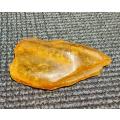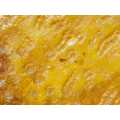This auction has been won.
View other items offered by ErnRex15453243
Leading
MingQing Antiques353
1 ×
R452.00
7 Feb 19:46
Runners-up
ConCar0506860
1 ×
R452.00
7 Feb 22:27
Bitter end18920
1 ×
R299.00
7 Feb 16:41
SA Collect Invest1419
1 ×
R185.00
7 Feb 09:24
Jadan0773386
1 ×
R150.00
6 Feb 15:13
CarMic349329
1 ×
R125.00
6 Feb 17:54
123 weg4289
1 ×
R65.00
6 Feb 17:11
DrMWon9933410
1 ×
R1.00
6 Feb 12:03
ASTONISHING THREE 25 MILLION YEAR OLD INSECTS (LOOK LIKE MOSQUITOES) IMBEDDED IN DOMINICAN AMBER
1 was
available
/ secondhand
Shipping
Standard courier shipping from R30
R30 Standard shipping using one of our trusted couriers applies to most areas in South Africa. Some areas may attract a R30 surcharge. This will be calculated at checkout if applicable.
Check my rate
Check my rate
Free collection from
Doornpoort, Pretoria
The seller allows collection for this item and will be in contact with the full collection address once the order is ready.
Ready for collection by Friday, 7 June.
Ready to ship in
The seller has indicated that they will usually have this item
ready to ship within 7 business days. Shipping time depends on your delivery address. The most
accurate delivery time will be calculated at checkout, but in
general, the following shipping times apply:
Standard Delivery
| Main centres: | 1-3 business days |
| Regional areas: | 3-4 business days |
| Remote areas: | 3-5 business days |
Seller
Buyer Protection
Product details
ASTONISHING THREE 25 MILLION YEAR OLD INSECTS (LOOK LIKE MOSQUITOES) IMBEDDED IN DOMINICAN REPUBLIC AMBER
THIS IS AN INTERESTING TIME CAPSULE. A PIECE OF AMBER WITH THREE (POSSIBLY MORE) INSECTS (LOOK LIKE MOSQUITOES) IMBEDDED. PLEASE HAVE A LOOK AT THE CLOSEUP PHOTOS MAYBE YOU CAN SPOT MORE!
THIS PARTICULAR PIECE OF AMBER WAS BOUGHT BY ME 20 YEARS AGO FROM AN AMERICAN THAT CAME TO SELL FOSSILS AND METEORITES AT A STALL IN MENLYN SHOPPING CENTRE. HE SAID IT IS AMBER FROM THE DOMINICAN REPUBLIC.
Hymenaea Protera, an extinct prehistoric tree, was the source of Dominican amber millions of years ago. To be precise, scientists estimate that Dominican amber dates back around 16 to 25 million years. Amber from the Dominican Republic is the most likely to contain insect inclusions.
TESTS PERFORMED:
PASSED THE STATIC ELECTRICITY TEST: I COULD FEEL IT RAISING THE HAIR ON MY ARMS
If rubbed vigorously on a piece of wool, the real deal will generate a static charge strong enough to pick up a small piece of ash and rise the hairs on your arm.
PASSED THE UV FLUORESCENCES TEST: GLOWS TURKOOIS TO MAGENTA UNDER UV
Real Amber and copal will glow in UV light, while imitations will not. Opaque cream, or with a reddish tinge or blue or green.
SIZE: 8.0cm x 4.5mm x 15mm
CONDITION: IN GOOD CONDITION PLEASE SEE PHOTOS
AMBER:
Amber is the hardened resin of ancient pine trees. This organic substance is natures time capsule and is most well-known for the incredible inclusions of insects and other remnants of life from long ago that can be found within it. People have been making amber jewelry for over 10,000 years, and the fascination with amber continues today. Amber can be white, yellow, and orange to reddish brown. Transparent amber is more valuable than cloudy material. However, interesting plant or animal inclusions add to the value of any amber specimen.
Amber is surprisingly light: in fact, it will float in a saturated salt solutionbut not in ordinary seawater. This makes it suitable for large beads or pendants that are still comfortable to wear despite their size. Most amber is polished in free-form shapes, cabochons, beads or might be carved. In rare cases, very transparent material might be faceted for collectors.
Most biologists agree the Jurassic Park scenario isnt possible, as any blood an insect was carrying would deteriorate rapidly and be contaminated with the insects DNA. However, scientists have extracted DNA from insects in 120-million-year-old amber. Baltic amber is geologically older in origin and generally more valued in the market. Amber from the Dominican Republic is the most likely to contain insect inclusions.
Amber does not have a chrystal structure but is a mixture of organic compounds, including hydrocarbons, resins, succinic acid, and oils. Most of this substance comes from the preserved resin of the pine species Pinus succinifera that has been preserved for at least 30 million years.
Although amber is commonly referred to as fossilized resin, it's not a fossil in the strictest sense. Most fossils begin when an animal or plant is buried in the earth. Over millennia, minerals slowly replace the organic materials in fossils. In contrast, amber's organic materials haven't been replaced. Instead, the resin has undergone a chemical transformation into a polymer, a natural plastic.
Preserved resin younger than 30 million years is known as copal, as is the organic gem material from the copal tree Protium Copal. Most gem pieces come from South America, Africa, and New Zealand. "Kauri Gum" is a copal from the kauri pine tree of New Zealand. Often confused with each other, amber and copal have very similar properties with nearly identical origins. The principal difference is age.
MOSQUITOES IN AMBER:
Researchers said they have discovered the oldest-known fossils of mosquitoes - two males entombed in pieces of amber dating to 130 million years ago during the Cretaceous Period and found near the town of Hammana in Lebanon. The researchers said while these are the oldest fossils, mosquitoes probably originated millions of years earlier. They noted that molecular evidence suggests mosquitoes arose during the Jurassic Period, which ran from about 200 million to 145 million years ago.
There are more than 3,500 species of mosquitoes worldwide, found everywhere except Antarctica. Some become disease vectors transmitting malaria, yellow fever, Zika fever, dengue and other diseases. According to the World Health Organization, more than 400,000 people die annually from malaria.
PLEASE ALSO SEE MY OTHER ITEMS LISTED. I HAVE VARIOUS OTHER GEMSTONES ALSO ON AUCTION THIS WEEK. COPY THE URL UNDERNEATH AND PASTE INTO GOOGLE AND IT WILL TAKE YOU DIRECTLY TO ALL MY LISTINGS THIS WEEK.
https://www.bidorbuy.co.za/seller/3685641/ErnRex1545
















